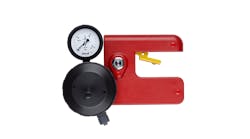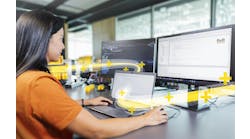This article is part of a series on industrial process safety. Read more of the series here.
You can't ice a cake without the cake, and you can't deploy today's digitalized safety solutions without a solid understanding and foundation of basic process safety.
All kinds of software and related solutions are available for simplifying process safety, and making it easier to implement and maintain. However, even the most sophisticated safety tools can't accomplish anything if no one has a reason to pick them up—i.e. an understanding, appreciation of and motivation to use basic process safety concepts, best practices and procedures. Just as the most precise analyzers are useless if their sensors don't work properly and deliver crucial data, the latest process safety software and support devices still require in-the-trenches safety know-how to apply them appropriately and in-context to achieve the most actual safety.
Prioritize data and protections
Likewise, basic process safety knowledge is also needed to sort through all of today's digital data, and determine which can enable the greatest protection in practice.
"Chemical and other process manufacturers have so much process data they're expected to track that many end up storing it all, and deliver all their data to databases and cloud-computing services. However, process safety isn't about storing data. It's about turning data into actionable safety information, which can show what safety issues need to be worked on," says Angela Summers, president at engineering consultant SIS-TECH. "Process safety also requires staying on top of data as new equipment is added and new hazards are identified. This also lets users maintain overall views of their operations, and keep track of open items they need to manage. Just as simply reclassifying alarms as alerts can produce too many alerts, saving and storing all data doesn't make sense because the 'noise' of it all can obscure the truly important issues that must be addressed."
To improve process safety by winnowing down all the available data and triage what needs to be acted on first, Summers reports that users must focus on what's actionable and what information can help determine what's actionable. "Process safety isn’t about overall trends or optimization. Process safety needs to know what's broken now, and finding gaps that can lead to incidents and closing them," explains Summers. "If someone's advising collecting all the data, it's likely they don't understand what problem they're trying to solve, whether it's a safety issue or something else."
Summers adds that digitalized and Internet-based tools can be prioritized in the same way as their data to determine if they can enhance process safety. "The proper way is looking at the most important variable in a process for control and safety, and collecting any data associated with safety excursions or other abnormal operation events," says Summers. "Next, we determine if there are gaps between the designed and theoretical performance that was expected and the actual performance in the real world. This is where we can begin to bring designed and expected performance up to par, so it can be used to take care of actual issues and prevent incidents."
Better reflecting reality
Simulation software that can help resolve the gaps between expected and actual performance—and model hazardous scenarios—has become more affordable in recent years, according to Summers. SIS-TECH presently helps clients employ Indiss software from Corys Software to simulate individual hazardous events, such as modeling if an existing process' setpoints are sufficient to respond in time to a given situation. "Without these simulations, we'd just have to base safety setpoints on experience or on percentages above or below normal operations, which is very qualitative," says Summers. "Models let us go beyond the theoretical, giving us better ways to do control and safety because they show how a process is likely to respond to actual events."
Summers reports simulation software also has advantages over traditional hazards and operability (HazOp) studies, which typically assess what happens when one variable goes askew and everything else in a process is normal. "Looking at how just one variable impacts the process operation within a HazOp doesn't reflect that it's part of a larger, more complex, integrated system. For example, when flow changes, it doesn't happen in isolation. It's a single deviation, but other pieces of equipment will react and adjust to that initial change," explains Summers. "These situations can get complex quickly. HazOps are qualitative, but you can't judge timing qualitatively. So, you may understand how flow changes impact process safety with a HazOp, but not see how fast a related pressure increases as a result. In short, there's never just one variable. Simulations let us see how flow impacts pressure and temperature, and allow us to check the robustness and resilience of the process control and safety response."
The other good news is that process simulations are getting simpler to deploy. Where traditional, high-fidelity process simulations had to be customized and required users to add and maintain lots of data, today's simulation software like Indiss lets users employ generic process models, and perform low- to medium-fidelity analyses that are sufficient for safety. "Process safety functions are typically pass-fail, and users need to know for certain if they'll work. They don't need high-fidelity analyses," says Summers. "For instance, a super-critical service may need high-fidelity simulation to optimize performance, and the ability to let users dial in to see deviations of 0.005%. However, a low-fidelity simulation is enough to show what happens when a transmitter has failed and whether it can cause an unsafe condition. Process safety just needs to know that a deviation poses a significant hazard, not if it's degraded by a certain percentage."
Digital twins get up to speed
Summers adds that SIS-TECH is also working with Corys on using digital twins for refining applications, which can offer more capabilities than regular simulations, as well as identify variables that could indicate a safety issue. "A simulation is a model of a process that allows you to trigger abnormal conditions and see what happens. A digital twin combines simulations with a digital copy of a control and safety system," says Summers. "So, as the initial model generates variables, users can see the control system respond, simulate how changes in the variables affect the process, incorporate safety models, and watch the plant run—all in a simulated state."
Summers reports digital twin and simulation software have been available for several years, but they're getting faster and more affordable. This means more users can use these tools to validate their control strategy by manipulating the process variables, watching the controls respond, seeing new variables change the controls again, and observing the safety system as it monitors the whole process. "Users can even simulate a valve failing open, see how long it takes to create a hazard, evaluate how serious that hazard will be, and determine if equipment damage will be likely," explains Summers. "If an open valve initiates full flow into a tank, the digital twin can be used to calculate the time to high level, and if the tank is feeds a distillation column or reactor, calculate the time to an unsafe condition. These periods are often a lot shorter than users expect. So, it's better to use digital twins, too, instead of just relying on personal experiences with safety events that are relatively rare."
In addition, Summers adds that digital twins can be used to examine all the situations in an organization's layers of protection analysis (LOPA), which means they can also be used for operations and safety training. "Operators can be thrown into simulated scenarios to see how well they can handle them and recover," says Summers. "This can give them valuable experience managing even usual situations. Of course, they can also run optimization scenarios to see of a planned adjustment or innovation will actually be an improvement."






